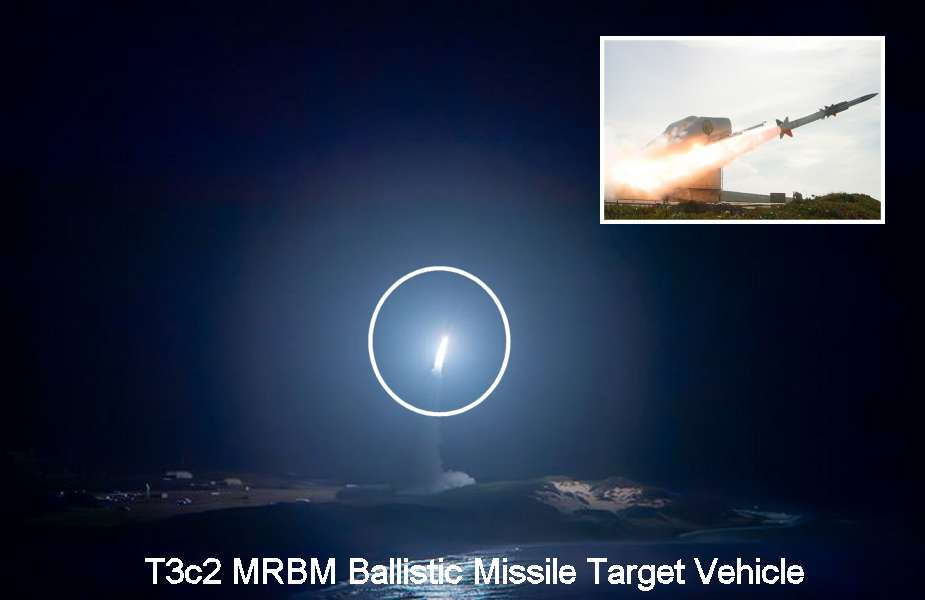
Northrop Grumman Corporation’s successful launch of a Medium-Range Ballistic Missile Type 3 Configuration 2 (MRBM T3c2) Target Vehicle marks a significant milestone in US missile defense development. Conducted in collaboration with the Missile Defense Agency (MDA) and the US Navy, the launch at the Pacific Missile Range Facility in Kauai, Hawaii, was part of Flight Test Aegis Weapon System 32 (FTM-32).
The Importance of Realistic Target Vehicles
Modern missile defense systems are complex, technologically advanced systems requiring rigorous testing and validation to ensure their effectiveness. Realistic target vehicles play a vital role in this process. By replicating the trajectories, speeds, and potential countermeasures of real-world ballistic threats, these targets allow engineers to evaluate the performance of missile defense systems under the most demanding conditions.
Northrop Grumman’s MRBM T3c2 target vehicle development exemplifies the high-fidelity simulation required for robust missile defense testing. This two-stage, solid rocket-fueled target is designed to mimic the characteristics of contemporary medium-range ballistic missiles precisely. Its construction incorporates decommissioned Navy and Air Force engines, demonstrating a commitment to the resourceful reallocation of existing assets. This approach promotes cost-efficiency and sustainability practices within the defense sector, underscoring Northrop Grumman’s ability to optimize resources while meeting stringent performance standards.
Testing Aegis Weapon Systems Against Evolving Threats
The Aegis Weapon System, a cornerstone of US naval defense capabilities, leverages advanced radar technologies and sophisticated combat management systems to provide comprehensive threat detection and tracking. Its integrated design is crucial for maintaining naval superiority in complex operating environments. The Flight Test Aegis Weapon System 32 (FTM-32), utilizing Northrop Grumman’s MRBM T3c2 target, served as a critical validation point for the system’s capabilities against evolving ballistic missile threats.
During the test, the Aegis system successfully detected, tracked, and intercepted the simulated MRBM during the terminal phase of its flight. The Standard Missile-6 (SM-6) Dual II, a key interceptor within the Aegis system, made this interception possible. The SM-6’s enhanced capabilities, including over-the-horizon targeting, facilitate engagement of threats during their final approach when defensive maneuvers are significantly more difficult.
The success of this test underscores the continuous refinement of the Aegis Weapon System and its ability to counter increasingly sophisticated ballistic missile technologies. This proactive approach ensures mission readiness and maintains the United States’ strategic advantage in the naval domain.
The Evolving Nature of Ballistic Missile Threats
Ballistic missiles, classified by their range, pose a unique challenge due to their high speeds and the predictability of their trajectories after launch. As potential adversaries develop more advanced ballistic missile technologies, the need for robust defensive capabilities becomes even more pressing. Northrop Grumman’s expertise in developing targets like the MRBM T3c2 aligns with the US military’s efforts to stay ahead of evolving threats.
“This program capitalizes on our proven history of innovative rocket designs, executed with speed and discipline,” said Robin Heard, director of targets, Northrop Grumman. “We continue to invest in technology that delivers these vital capabilities our customers need to respond to growing threats.” By providing realistic test scenarios, Northrop Grumman plays a crucial role in refining US missile defense.
The successful launch of the MRBM T3c2 reaffirms the United States’ commitment to maintaining robust missile defense capabilities. The collaboration between Northrop Grumman, the Missile Defense Agency, and the US Navy underscores the value of partnerships in safeguarding national security.
